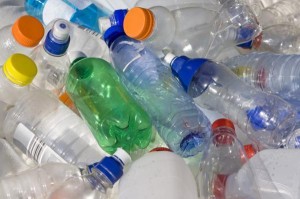Plastic Component Linked to Childhood Asthma
Apr 1st, 2013
 The chemical Bisphenol A or BPA is found in some plastics and in food can liners as well as store receipts. The latest study at the Columbia Center for Children’s Environmental Health at the Mailman School of Public Health is the first to suggest possible connection between early exposures to BPA and risk for asthma in children.
The chemical Bisphenol A or BPA is found in some plastics and in food can liners as well as store receipts. The latest study at the Columbia Center for Children’s Environmental Health at the Mailman School of Public Health is the first to suggest possible connection between early exposures to BPA and risk for asthma in children.
The results appeared in the March edition of the Journal of Allergy and Clinical Immunology.
“Asthma prevalence has increased dramatically over the past 30 years, which suggests that some as-yet-undiscovered environmental exposures may be implicated,” said lead author Kathleen Donohue, MD, an assistant professor of medicine at Columbia University College of Physicians and Surgeons in New York City. “Our study indicates that one such exposure may be BPA.”
A group of 569 mothers who are in their third trimester of pregnancy and their children at different intervals after they were born had urine samples taken for BPA test. A BPA metabolite found in urine acts as an indicator towards the level of exposure. Researchers found what can be described as a group of positive associations between BPA and breathing.
According to the study, chances of suffering from childhood asthma were increased if BPA was detected in their urine samples at ages 3, 5 and 7. In addition, when BPA was measured in urine at age 3, the chances of wheezing by ages 5 and 6 were increased. Same thing for 7-year-olds: BPA meant later problems with wheezing.
An exception to the findings occurred among children with BPA measured in their urine at 5 years of age; those children did not have problems with wheezing during follow-ups one or two years later. But this does not mean that all will develop childhood asthma.
“Just as smoking increases the risk of lung cancer but not everyone who smokes gets lung cancer, not every child exposed to BPA will develop childhood asthma. What is important is that we were seeing the association at routine low doses of exposure,” said Donohue.
The new study builds on existing evidence linking BPA exposure to respiratory symptoms, as well as to obesity, impaired glucose tolerance, and behavioral issues, among a range of health problems. The Food and Drug Administration has already banned BPA in baby bottles and children cups.
The study, Food Packaging and Bisphenol A and Bis(2-Ethyhexyl) Phthalate Exposure: Findings from a Dietary Intervention, suggests that the best solution is substituting on a fresh-food diet, which could cut down on BPA exposure by at least 60%. The National Institute for Environmental Health Sciences (NIEHS) currently recommends limiting BPA exposure by:
- Avoiding plastic number 3 and 7
- Choosing glass, porcelain or stainless steel instead of plastic
- Eating less canned foods if possible
- Steering clear of plastic when storing food
Related posts from our blog:
No related posts.
Tags: childhood asthma
Posted in: Simon Bukai | Comments Off